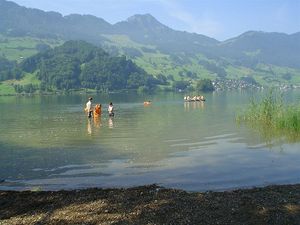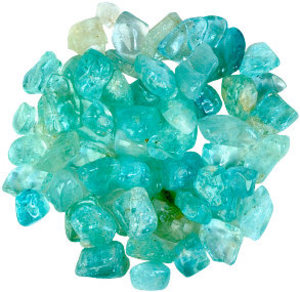I find it difficult to be near any body of water and not get in. There’s just something about the water that calls me in-I love it. It doesn’t matter what kind of body, either-from glistening aquamarine swimming pools, the bug infested Salt Lake, murky hot springs, to duck ponds at parks. Of course, I restrain myself when necessary.
Lakes are my favorite. I love the natural element of it, the fishy smell, the faux beach. Rocky, sandy, or even no beach-it doesn’t matter. I’ve swam in all kinds of lakes, and made more than a couple mistakes along the way. There are some things everyone should know before taking to the waters. Below are my suggestions for safety and having the best time available.
Choose areas wisely
Many larger and more recreationally popular lakes have designated beaches and swimming areas for a reason. The banks are appropriate, and there are buoys cordoning off the swimming area, keeping boaters, skiers and the like away. It’s also a more shallow area, and has likely been designated as the safest area for swimming. If there are designated swimming areas at a lake, it is likely not within the policy to swim in other areas.
If you find yourself at a smaller or not so popular lake with no designated swimming area or beach, pay attention to any signage about swimming. If there are “no swimming” signs posted, do not second guess them. There are probably good reasons swimming is not allowed, some of which may be for your own safety. Swimming is usually prohibited in designated fishing areas, and of course, it is simple courtesy to stay away from any area if you find people fishing.
If you are at a lake that you know allows swimming, or a private lake or pond, but has no designated swimming area, make absolutely certain the bank is stable, and that there’s a visible bottom, at least a couple feet out., so you know it is a shallow area.
Some bank areas can look normal, but as foot pressure is placed, their marsh-like wetland style nature becomes apparent. Extreme mud, along banks and lake bottoms is a huge danger, and can have a terrifying, Chinese-finger-pull, or quicksand-like effect when stepping in. Stay far away from muddy banks and lake bottoms.
Special lake-swimming gear
Although lake swimming really boils down to swimming, and you should prepare with the same care as you would if swimming in the ocean, or a pool, (sunscreen, drinking water, sunhats, cover-ups, swimming diapers for babies, etc.) its nature is different enough that some extra thought is warranted.
Footwear & goggles
One of the non-negotioable, absolutely necessary items you will need for safe lake swimming is proper footwear. I don’t just mean shoes for walking around on the twiggy and rocky shoreline-I mean shoes that you will actually swim with-footwear that will accompany you into the lake itself.
Lake bottoms are notoriously lined with broken glass, sharp rocks, fishing hooks and lures, and all manner of sharp objects. Although a scratch isn’t the worst thing in the world, a deep gash could be. There’s just no reason to take a chance, especially when there are so many versatile waterproof, fast-wicking sport sandals or shoes available.
My favorite such shoes are Chacos. They come in styles for women, men, and children. They last forever. In my experience, they are far superior to Tevas, which can fray after longer or more aggressive use.
I have a pair of Chacos that have been across the world and back, on countless terrains, including dozens and dozens of lakes. Remarkably, after four years now, they look completely unweathered! Simply put, they are the perfect lake swimming shoe, and then some.
I also believe it’s wise to use goggles while lake swimming. It’s nice to be able to see underwater-sometimes you can even see fish, and once, we even saw an old wrecked boat. It’s also a safety precaution, of course. The more you can see, the better decisions you can make.
Also, the type of swimming goggles that cover the nose are particularly good for lake swimming-getting lake water up your nose and in your sinuses isn’t the most sanitary thing in the world, with microbes and bacteria that exist in the water. Take extra precautions not to get it in your mouth as well.
Clothing
Sometimes swimming in lakes is spontaneous, and that is part of its fun and appeal. If skinny-dipping isn’t appropriate, and you don’t have a swimsuit, then strip down, removing as much loose clothing as possible, while staying in the bounds of decency. Some official lake beaches may have “swimsuit-only” rules. Never swim in jeans, long sleeves, or any kind of loose or heavy clothing. Use your head.
If the area is fairly isolated, but skinny dipping inappropriate ( I believe the only time it is legal is on and private property) underwear is probably the best choice. Of course, having a swimsuit on underneath the clothes, instead of underwear is a good idea, if you think lake swimming might be on the agenda for the day.
Misc.
Finally, it’s nice to have swimming noodles in lakes. Not only are they a safety item, they’re particularly nice for this more relaxed and casual kind of swimming. Keeping a few in the back of the car, along with any other necessary accouterments you or your family may need or want, is a good idea if lake swimming could be on your agenda.





